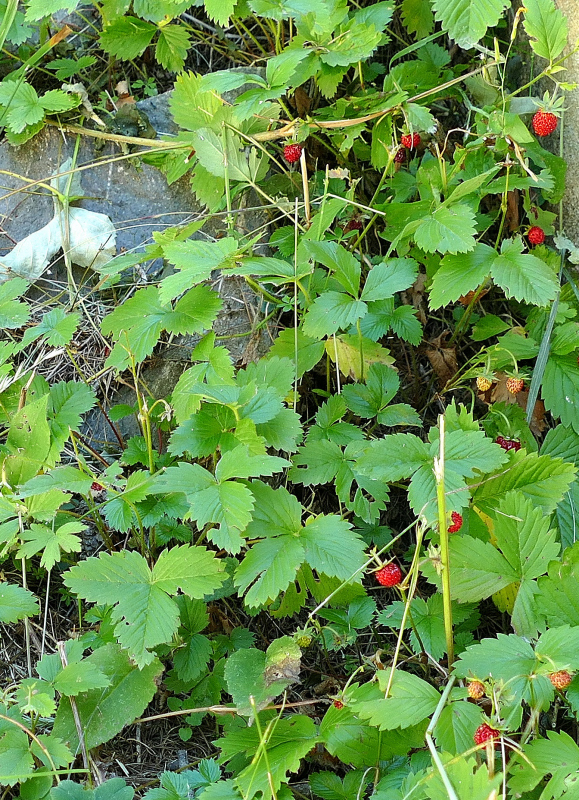App "Tiiips Ingredients Pro", Live Healthier!


App "Tiiips Ingredients Pro", Live Healthier!


| "Descrizione" by Handy23 (4269 pt) | 2023-Oct-12 12:46 |
| Evaluation | N. Experts | Evaluation | N. Experts |
|---|---|---|---|
| 1 | 6 | ||
| 2 | 7 | ||
| 3 | 8 | ||
| 4 | 9 | ||
| 5 | 10 |
Fragola (Fragaria) è una piantina sempreverde rampicante appartenente alla famiglia botanica delle Rosaceae che raggiunge i 20 cm di lunghezza, il frutto è altamente deperibile ed ha una breve durata a causa di una degradazione della parete cellulare nelle ultime fasi della maturazione.

Appartiene alla famiglia delle Rosaceae.
Vi sono numerose specie di Fragola, tra le quali :
Si adatta a quasi tutti i terreni e gradisce luoghi non completamente esposti al sole. Resiste bene al freddo.
Applicazioni commerciali:
Alimentazione. Le fragole sono utilizzate in una vasta gamma di preparazioni culinarie, tra cui dolci, gelati, marmellate, e anche in insalate o come guarnizioni. Sono anche consumate fresche come snack o dessert.
Agricoltura. La coltivazione delle fragole richiede attenzione alle condizioni del suolo, dell'acqua e al controllo dei parassiti, e viene praticata in molte regioni del mondo, godendo di popolarità sia per il consumo locale che per l'esportazione.
Industria Alimentare. Le fragole sono utilizzate per produrre una varietà di prodotti trasformati, tra cui succhi, marmellate, gelati e prodotti da forno.
Benefici per la Salute. Le fragole sono ricche di vitamine, minerali e antiossidanti, ed hanno proprietà anti-infiammatorie e cardio-protettive.
Studi
La fragola contiene una vasta gamma di sostanze nutritive che contribuiscono al mantenimento in buona salute del corpo umano come il contenuto di carotenoidi nella polpa (1) :
Contiene anche composti naturali e fitochimici con attività antibatteriche e antiossidanti. Possiede inoltre carboidrati, fibre alimentari solubili, e acidi grassi polinsaturi (2).
La prevenzione alimentare naturale basata sull'alimentazione offre significativi effetti di prevenzione del cancro con tossicità piuttosto bassa. In una serie di studi preclinici e clinici la fragola è stata scelta come intervento a base alimentare in quanto ha dimostrato potenti attività di prevenzione con attività antinfiammatoria ed antitumorale attribuibili agli antociani (3).
Tiliroside, un flavonoide presente in rilevante quantità nella fragola, ha dimostrato di sopprimere l'aumento dei livelli di glucosio plasmatico post-prandiale. Questa scoperta rivela l'attività antidiabetica della fragola (4).
Bibliografia_______________________________________________________________________
(1) Swada JG, Keeley CJ, Ghane MA, Engeseth NJ Relationship between pulp structure breakdown and nutritional value of papaya (Carica papaya) and strawberry (Fragaria x ananassa) nectars using alternative thermal and non-thermal processing techniques.. J Sci Food Agric. 2016 May;96(7):2514-23. doi: 10.1002/jsfa.7372. Epub 2015 Sep 21. PMID: 26250848.
(2) Dias MI, Barros L, Morales P, Cámara M, Alves MJ, Oliveira MB, Santos-Buelga C, Ferreira IC. Wild Fragaria vesca L. fruits: a rich source of bioactive phytochemicals.
Food Funct. 2016 Nov 9;7(11):4523-4532. doi: 10.1039/c6fo01042c.
Abstract. Wild Fragaria vesca L. fruits were studied regarding nutritional and phytochemical compounds, and also antioxidant, antibacterial and biofilm formation inhibition activities. The fruits are good sources of carbohydrates (e.g., sucrose), soluble dietary fiber and polyunsaturated fatty acids, mainly linoleic and linolenic acids, as well as other components such as citric and succinic acids, and vitamins B9 and E (mainly γ-tocopherol). Significant amounts of soluble sugars, citric acid and some amounts of ascorbic acid, vitamins B9 and E (only α-tocopherol) were found also in the infusions. The hydromethanolic extracts revealed higher amounts of phenolic compounds, mainly ellagic acid derivatives and dihydroflavonol taxifolin-3-O-arabinofuranoside. Consistently, these extracts also showed higher antioxidant and antibacterial activities than the infusions, and were able to inhibit the formation of bacterial biofilms. Despite the lower content of bioactive compounds in the infusions compared to the fruits, both forms could be potentially applied in functional foods and/or nutraceuticals/pharmaceutical formulations.
(3) Chen T, Shi N, Afzali A. Chemopreventive Effects of Strawberry and Black Raspberry on Colorectal Cancer in Inflammatory Bowel Disease. Nutrients. 2019 Jun 3;11(6). pii: E1261. doi: 10.3390/nu11061261.
Abstract. Colorectal cancer (CRC) remains the third most common cause of cancer-related death in the United States and the fourth globally with a rising incidence. Inflammatory bowel disease (IBD) is a chronic immunologically mediated disease that imposes a significant associated health burden, including the increased risk for colonic dysplasia and CRC. Carcinogenesis has been attributed to chronic inflammation and associated with oxidative stress, genomic instability, and immune effectors as well as the cytokine dysregulation and activation of the nuclear factor kappa B (NFκB) signaling pathway. Current anti-inflammation therapies used for IBD treatment have shown limited effects on CRC chemoprevention, and their long-term toxicity has limited their clinical application. However, natural food-based prevention approaches may offer significant cancer prevention effects with very low toxicity profiles. In particular, in preclinical and clinical pilot studies, strawberry and black raspberry have been widely selected as food-based interventions because of their potent preventive activities. In this review, we summarize the roles of strawberry, black raspberry, and their polyphenol components on CRC chemoprevention in IBD.
(4) Goto T, Horita M, Nagai H, Nagatomo A, Nishida N, Matsuura Y, Nagaoka S. Tiliroside, a glycosidic flavonoid, inhibits carbohydrate digestion and glucose absorption in the gastrointestinal tract. Mol Nutr Food Res. 2012 Mar;56(3):435-45. doi: 10.1002/mnfr.201100458.
| Evaluate |